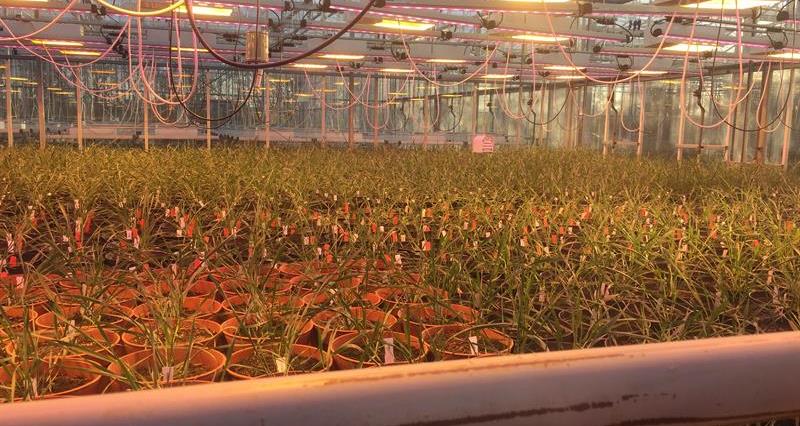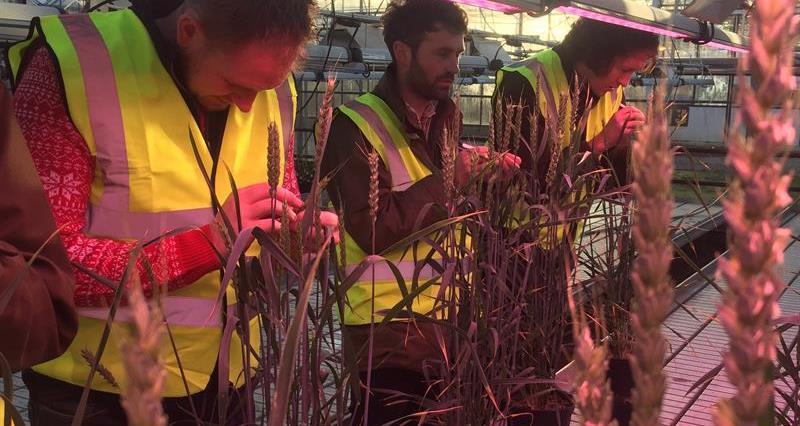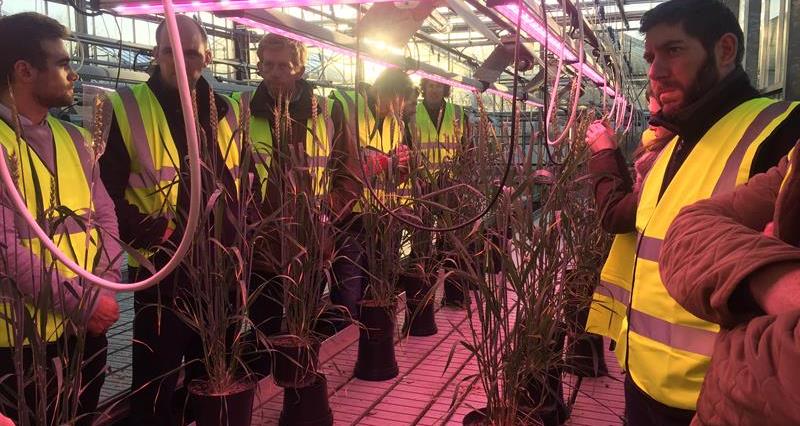Last week, the CDP visited KWS for the final visit of 2018. Jamie Greaves from Oxfordshire reports.
After finding the last three visits thoroughly interesting and very enjoyable I was keen for the fourth CDP visit to KWS to come around.
On the morning of December 12th we met at 10am at KWS Royston offices just South of Cambridge. After a quick coffee and catch up with the other candidates, and a brief moment to take in the fantastic array of Christmas jumpers on show, we moved into the presentation room and made a start.
We were introduced to John Miles who was kindly going to show us around for the day. John is a product development manager at KWS who started with the company 13 years ago and has a fantastic wealth of experience and knowledge in plant breeding and everything KWS.
John started with a brief presentation on the company and its background. KWS is currently a 1.3billion dollar company, with its majority shareholder stake still held and owned by the original families that started it 160 years ago. It currently has breeding and distribution activities in over 70 countries, breeding seed for sugar beet and fodder beet, corn, cereals, oil and protein plants, sorghum and catch crops.
We then moved on to look at the research and development that is constantly taking place at KWS. The four main R&D areas are as follows: cereals, maize (Americas), maize (rest of world) and sugar beet. We were to be looking specifically at winter wheat for the day, which compared globally to corn and spring wheat, is relatively small, but here in the UK it has a much larger percentage of the market. It was clear how seriously committed KWS are at driving research and development. A couple of interesting facts that really backed this up for me included, that 17% of net sales go back into R&D and 1,900 of its 4,950 employees are involved in R&D which proves its dedication to developing future varieties that will hopefully thrive in our farming systems moving forward.

We then took a short break to digest the wealth of information we had just been presented with and recharge with a coffee ready to jump into the technicalities of plant breeding.
John started by giving us a nice, simple analogy of plant breeding, comparing it to dolls “Barbie and Ken” which simply means selecting the best traits from both parents to form the best offspring. From this basic example, we soon dived into the depths of plant DNA and wheat genetics, and learnt about the astonishing complexity of wheat genomes. To put this into context the human genome contains just under 3million base pairs compared to the wheat plants genome which contains just under 16million base pairs, with base pairs coding for individual traits. This explains why wheat is such a complex plant to try and selectively breed for the traits that appeal to us as growers such as yield potential and stability, disease resistance and quality. All of these being extremely important to us now and looking ahead, with the increasing pressure on agricultural chemicals, they could become more important than ever.
We then went on to look at the different methods of breeding a variety of wheat, and the length of time it takes from the initial cross to a marketable seed for growers. In short, there are 3 methods of breeding; the pedigree system which takes 8 years, single seed descent which takes 7 years and double haploid which takes 6 years. The pedigree system is the most widely used method, typically costing £1million per variety to produce over the 8 year breeding period. At national list trials, in year 1KWS will typically enter 16 varieties and end up with only 2 making it on to the list following the second year of NL trials. A popular variety that most farmers will have heard of is Santiago, which was conceived in 2004 to finally gain recommendation in 2011, demonstrating how plant breeders have to think and work so far in advance. However, with the aid of technology which is evolving so rapidly, I am sure in the future we will see these breeding method timelines shortened even more.
After an enjoyable lunch and a rest for our well-worked brains we headed into our cars and just up the road to the KWS Farm site. An 180ha farm made up of trials, breeding crops and multiplication crops. We had a tour of the impressive seed processing plant then headed to the green houses to have a look at the growing crops and to have a play with some wheat plants. These were just pre- flowering and we got the chance to attempt to perform the delicate process of emasculation, which is the first stage of crossing a wheat plant. It involves taking the male pollinating parts out of the wheat ear with tweezers, leaving the ear as all female, preventing the plant from self-pollinating. After three days it becomes receptive to pollen which is introduced from another ear with male pollinating parts. This male ear will be of a different variety and when introduced and cross-pollinated they will make the first cross. I must say I can’t see my attempt being too successful, as it wasn’t looking in the best of states by the time I had finished! Our tour rounded up with a look around the vast array of specialist machinery ranging from trial plot combines, precision drills, sprayers and everything else required to grow the cereal seed crops.

All in all it was a fascinating visit, which gave us a real insight into plant breeding at KWS and left me feeling very satisfied with how the UK’s royalties system is helping drive the future development of varieties that is becoming ever more important to our future as growers going forward.
I would like to thank John and KWS on behalf of our entire group for giving us such a thoroughly interesting, thought provoking visit and a fantastic goody bag!
